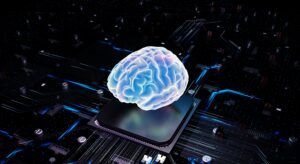How Neuromorphic Engineering Is Shaping the Future of Computing


Neuromorphic engineering is transforming the digital world. It brings a new era of computing inspired by the human brain. This technology merges biology, electronics, and artificial intelligence to build smarter, faster, and more efficient systems. As the demand for energy-efficient AI grows, neuromorphic computing stands at the center of innovation.
Understanding Neuromorphic Engineering
Neuromorphic engineering focuses on designing systems that mimic the brain’s structure and function. Traditional computers employ binary logic, whereas neuromorphic systems utilize neuron-like architectures. These systems communicate through electrical spikes, similar to how neurons send signals.
Researchers use specialized hardware known as neuromorphic chips. These chips simulate neural networks more efficiently than conventional processors. They perform tasks such as pattern recognition, sensory processing, and decision-making with remarkable speed and low power consumption.
The Science Behind Brain-Inspired Computing
Neuromorphic systems are composed of two primary components: artificial neurons and synapses. Neurons process data, while synapses control how signals pass between them. Together, they form a network that learns and adapts in real time.
Unlike standard AI models that depend on cloud computing, neuromorphic systems can process data locally. This ability reduces latency, saves energy, and improves responsiveness. It allows devices such as autonomous cars and drones to make split-second decisions.
This innovation brings us closer to human-like intelligence in machines. It enables them to learn continuously and operate independently.
How Neuromorphic Chips Redefine Artificial Intelligence
Neuromorphic chips are the heart of this technological revolution. Companies like Intel and IBM have already developed chips such as Loihi and TrueNorth. These chips use spiking neural networks (SNNs) that work more like biological brains than digital circuits.
Traditional AI systems require vast amounts of data and energy. Neuromorphic chips, however, handle information more efficiently. They activate only when necessary, mimicking how neurons fire. This event-driven approach reduces energy use while boosting computational power.
Such chips enable real-time learning and adaptability. This makes them ideal for applications in robotics, smart sensors, and Internet of Things (IoT) devices.
Neuromorphic Hardware and Sustainable Computing
One major challenge in modern computing is power consumption. Data centers consume a substantial amount of energy to support AI workloads. Neuromorphic engineering offers a sustainable solution.
Neuromorphic processors consume far less energy than traditional CPUs or GPUs. Their architecture allows asynchronous processing, meaning they operate only when needed. This significantly reduces power consumption and extends battery life in portable devices.
Moreover, these systems generate less heat, reducing the need for heavy cooling systems. This makes neuromorphic hardware an eco-friendly choice for future computing infrastructures.
Applications Transforming Industries
The impact of neuromorphic computing goes beyond laboratories. It is already influencing multiple industries.
Smart Robotics and Automation
Neuromorphic systems enable robots to process sensory input in real time. They can react quickly to changes in their surroundings. Robots equipped with neuromorphic chips perform better in unpredictable environments.
Healthcare and Neural Interfaces
In medicine, neuromorphic devices support brain-computer interfaces (BCIs). These interfaces help patients control prosthetics using neural signals. They also assist in diagnosing neurological disorders by mimicking brain activity.
Autonomous Vehicles and Edge Computing
Self-driving cars depend on fast and efficient decision-making. Neuromorphic chips enhance sensor data processing and reduce latency. This improvement ensures safer navigation and smoother performance on the road.
Internet of Things (IoT)
IoT devices benefit greatly from low-power processing. Neuromorphic systems allow continuous learning and adaptability in smart homes or industrial environments.
Neuromorphic Engineering vs. Traditional Computing
The main difference between neuromorphic and conventional computing lies in architecture. Traditional computers follow a sequential process using stored instructions. Neuromorphic systems, however, process information in parallel, just like the brain.
This parallel processing allows faster computation and better adaptability. It also reduces bottlenecks common in standard architectures.
Furthermore, neuromorphic systems excel in analyzing unstructured data. They can handle audio, video, and sensor data more naturally. This makes them essential for AI applications requiring perception and intuition.
Challenges in Neuromorphic Development
Despite its promise, neuromorphic engineering faces hurdles. Creating brain-like systems necessitates the development of new materials, algorithms, and programming models.
Developers must rethink how software interacts with hardware. Current machine learning frameworks are designed for digital architectures, not spiking neural networks. Researchers are developing new programming tools to bridge this gap.
Hardware scalability is another challenge. Building large neuromorphic systems that replicate billions of neurons remains a complex task. However, continuous advancements in chip design are steadily overcoming these obstacles.
Future Prospects of Brain-Inspired Computing
The future of neuromorphic engineering is bright. As artificial intelligence becomes more embedded in daily life, energy-efficient computing will be essential. Neuromorphic systems can meet this demand while advancing machine intelligence.
Future chips may combine quantum computing with neuromorphic architectures. This hybrid approach could unlock new levels of performance and problem-solving abilities.
We can also expect widespread adoption in consumer electronics, autonomous systems, and healthcare technologies. Governments and research institutions worldwide are investing heavily in this field, signaling a long-term commitment to growth and innovation.
Why Neuromorphic Engineering Matters for the Future of Computing
Neuromorphic engineering represents a paradigm shift. It moves computing from rigid digital logic toward adaptive, learning-based models. This evolution will redefine how we interact with technology.
By imitating the brain, these systems bring computing closer to human cognition. They allow devices to think, learn, and evolve independently. As AI becomes more autonomous, neuromorphic technology will form the foundation of intelligent systems.
Building a Smarter Digital Future
Neuromorphic engineering is not just another technological advancement. It is a fundamental change in how computers think and operate. With its energy-efficient design and brain-inspired intelligence, it promises a sustainable and powerful future.
As researchers and engineers continue to refine this technology, we move closer to machines that can truly understand, adapt, and learn like humans. The future of computing lies in neuromorphic engineering—a bridge between biology and technology, creating smarter systems for a connected world.
